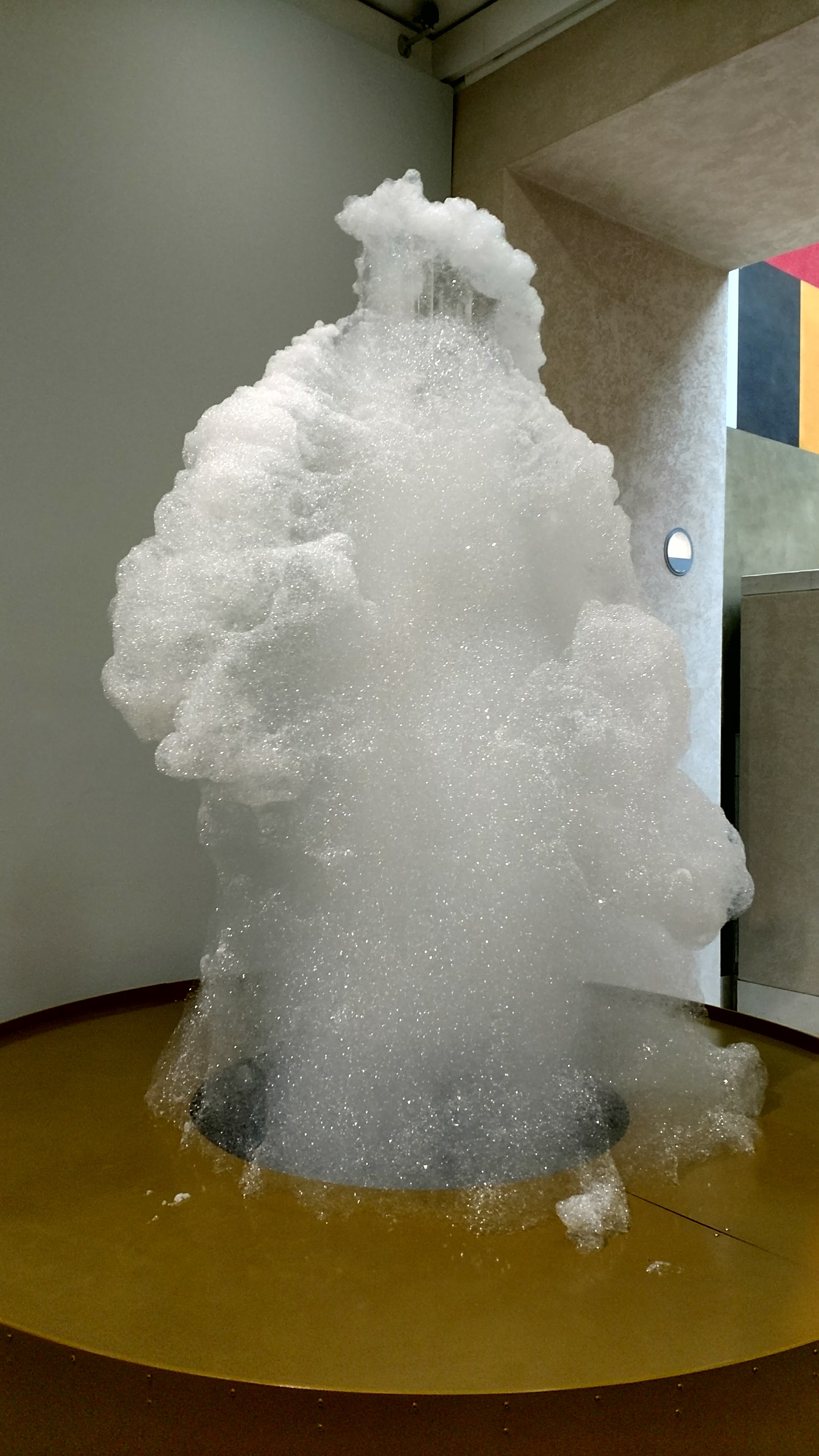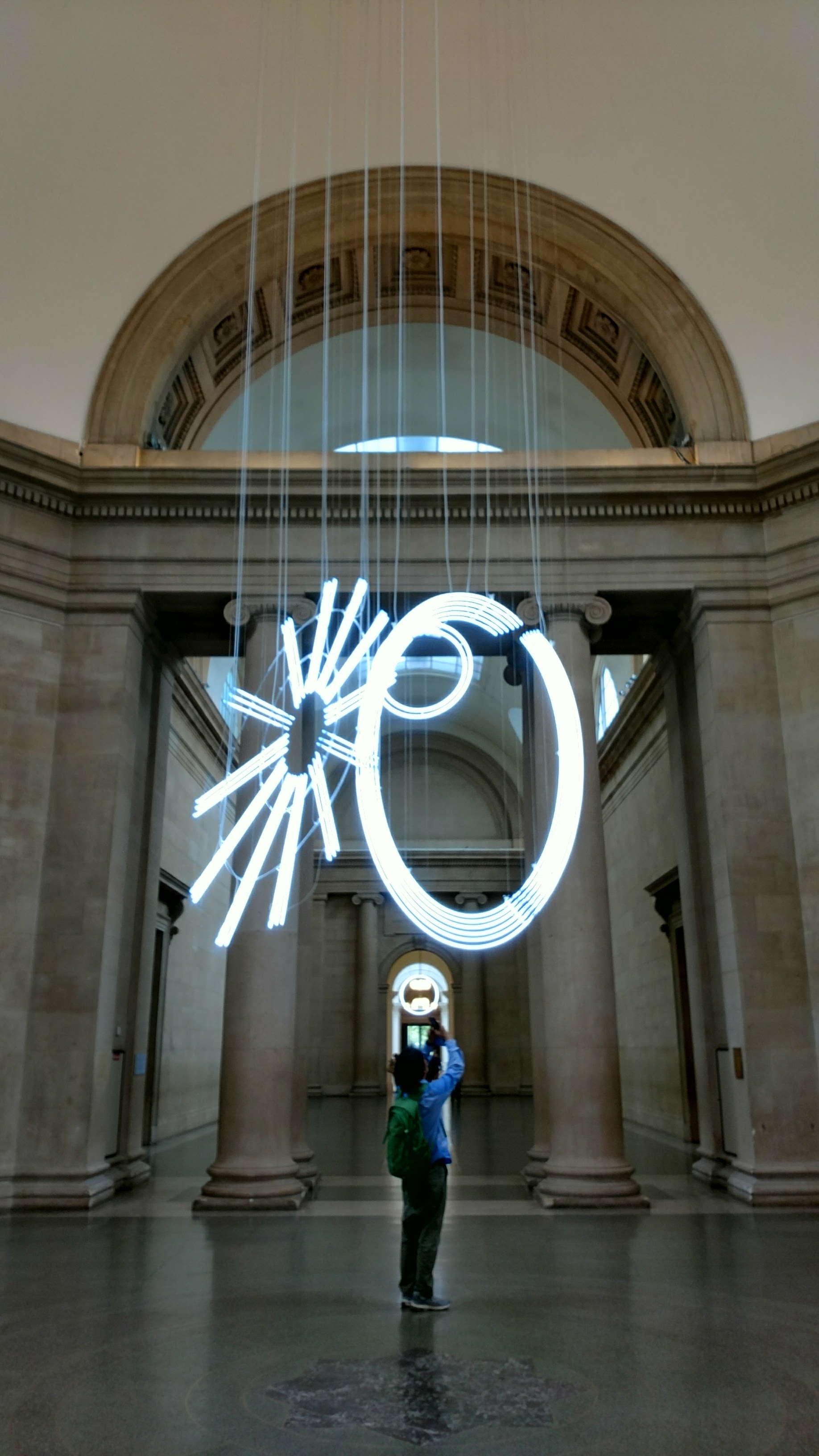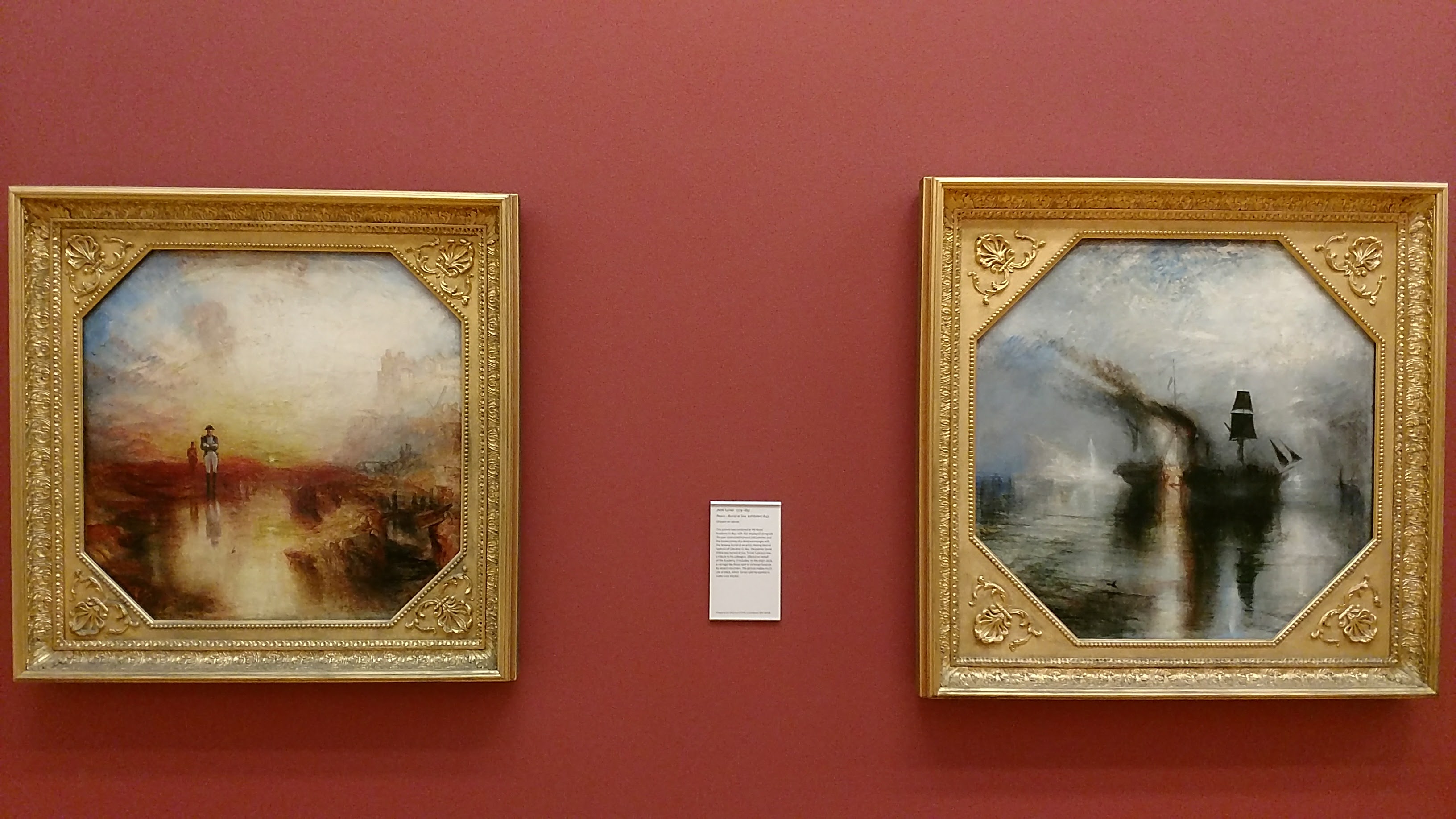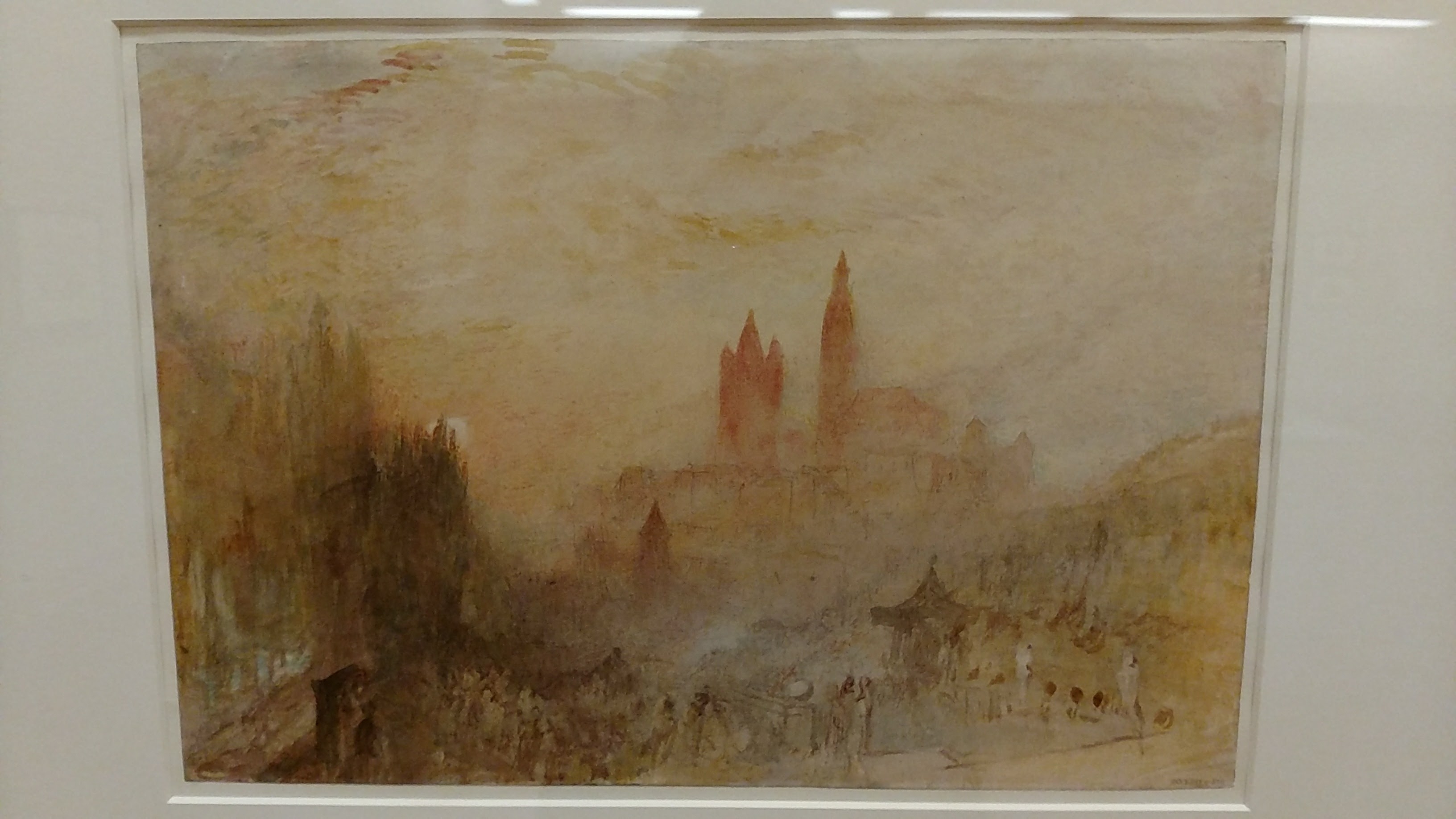Difference between revisions of "Bjsecino"
From Londonhua WIKI
| Line 119: | Line 119: | ||
I spent over an hour in just one single room of the [[Victoria and Albert Museum]]. It wasn't even one of the bigger rooms. As far as the exhibits in the V&A go, this one was actually tiny. But, man. The things I seen. Unfortunately, while photography is actively encouraged in many other parts of the museum, it is not allowed inside the Jewelry exhibit.This is too bad because I can think of no objects more worthy of being photographed than the elegant sapphire rings and gaudy diamond-encrusted headdresses on display here. | I spent over an hour in just one single room of the [[Victoria and Albert Museum]]. It wasn't even one of the bigger rooms. As far as the exhibits in the V&A go, this one was actually tiny. But, man. The things I seen. Unfortunately, while photography is actively encouraged in many other parts of the museum, it is not allowed inside the Jewelry exhibit.This is too bad because I can think of no objects more worthy of being photographed than the elegant sapphire rings and gaudy diamond-encrusted headdresses on display here. | ||
<br><br> | <br><br> | ||
| − | Besides the sheer scale and beauty of the jewelry on display, I was fascinated by the evolution | + | Besides the sheer scale and beauty of the jewelry on display, I was fascinated by the evolution of jewelry over time that is so clear in the exhibited works. The collection spans over 3,000 years of European history, so I was able to clearly see the changing fashions, abilities, and fortunes of England and the Continent. Prehistoric jewelry started off as blocky and abrupt, making strong statement through volume and placement. Larger stones and thicker metal bands were emphasized, partially because of the difficulty of crafting smaller objects, and partially because of tastes and fashion. These tastes would change, and by the 17th and 18th centuries jewelry was becoming so intricate that it could sometimes look like pure diamond, with the wiring between stones almost invisible. The most modern jewelry on display, from the 20th and 21st centuries, seems to showcase intricate formations and exacting craftsmanship over quantity of stones, with the finest examples flaunting the nearly-unlimited abilities of their makers. |
<br><br> | <br><br> | ||
| + | To me, one of the most fascinating aspects of jewelry collections is the way in which "beauty" changes over time and across cultures. Beauty can feel so definite sometimes, and it's healthy to be reminded that while a diamond might be forever, the culture appraising it is not. This will be an important concept to keep in mind when looking at historical English authors, whose ideals and worldviews may be very different from my own. In fact, these differences may prove to be the most interesting features of the entire project. Because who doesn't enjoy having their preconceptions challenged by some of the finest artists in history? | ||
=My Complete Contributions= | =My Complete Contributions= | ||
Revision as of 06:56, 19 May 2017
Benjamin Secino
 Benjamin Secino performing Bronze Jive with Shravani Balaji at the 2017 Rhode Island College Ballroom Dance Competition |
Contents
Overview
This project explores London through the literary and physical arts. England and London are known the world over as major contributors to both ballroom dance and literature. In order to better understand these contributions, this project will consist of in-depth, experience-based research into the lives of English authors and the Standard and Latin styles of Ballroom dance. Prior to embarking on this project, Benjamin Secino spent one year taking lessons in the English "International" styles of ballroom dance, as well as the "American" styles. He has also taken extensive Humanities and Arts courses in English Literature.
Milestone 1
English Ballroom Dance
Objective: This milestone explores the history and present-day reality of English Ballroom Dance styles and techniques, focusing on the Waltz.
Below the objective statement, Insert a one or two paragraph summary of your findings from having reached this milestone. Edit the link below to link to your milestone page.
Read More
Milestone 2
The Themes, Inspirations, and Influences of George Orwell's 1984
Objective: This milestone details the major themes of George Orwell's 1984, exploring their inspirations and the influences that they have had on the modern view of totalitarianism. These themes are then used as inspiration for the composure of an original creative writing piece.
Below the objective statement, Insert a one or two paragraph summary of your findings from having reached this milestone. Edit the link below to link to your milestone page.
Read More
Milestone 3
The Lives of English Authors
Objective: What were the lives of famous English authors and poets like? This milestone will seek answer this question this through tours of authors' houses and visits to writers' museums.
Below the objective statement, Insert a one or two paragraph summary of your findings from having reached this milestone. If this milestone, for you, represents a humanities and arts capstone, please indicate so. Edit the link below to link to your milestone page.
Read More
Activity Journal
The activity journal represents an ongoing log of reflections gained through each and every project activity on the calendar.
5-8-2017
Today's activities: Westminster Abbey, Tower of London, The British Library.
Today, we started the morning with a guided tour of Westminster Abbey. The most striking feature of this cathedral for me was the sheer volume of history stored here. Unfortunately, personal photography was restricted to the Cloisters and the Chapter House, so I'm unable to illustrate here the density of the memorials on view. However, if you imagine how a cathedral would look if memorials and tombs had been continuously added to its walls and corridors for over 900 years, you may arrive at a reasonable mental image. The vast number of memorials impressed me more than any of the other striking features of the cathedral, including the towering vaults, the intricate ornamentation, or the exquisite glasswork. As an American, I come from a country that is relatively young, and has not yet developed a labyrinthine history stretching back millennia. Seeing such a history on display was a mind-opening experience.
From Westminster Abbey, I headed with a smaller group to the Tower of London, which I explored with a handful of other students. Because this tour was self-guided, I had the opportunity to pause frequently, enjoying the smaller details and less obvious spaces. In particular, I appreciated spending some time around the less prestigious Crown Jewels. Photography was not allowed in this area, but the collection of Crown Jewels ranged from the Coronation Crowns of historic monarchs to golden spoons for banquets. It was the smaller items, the spoons and the plates, that made me appreciate the wealth and power of the historic British monarchy. A few jewel-encrusted crowns, while unimaginably finely crated and valuable, are no harder to procure than a banquet hall-full of golden plates, bowls, chalices, and cutlery. The purpose of these pieces was to show in the most visible way possible the strength of the British Crown. Judging only by the impression they've made on me, the artists behind their construction hit their mark precisely.
As a final stop, I went with a few other students to The British Library. Here, I learned that library in Europe operate differently than those in the United States. There are not books available for public browsing, any requested books need to be for a specific research purpose, and there are far fewer public seating areas than in any libraries found in America. On my walk through the library, the only books I saw were part of The King's Library. As the name might suggest, The King's Library is not public-access. Even though I couldn't read them, they made the most beautiful book display I've ever seen!
5-9-2017
Today's Activity: St. Paul's Cathedral
While visiting St. Paul's Cathedral, I was struck primarily by how breathtakingly big it was. Not just in terms of physical size, but also in terms of the emotional impact the Cathedral makes on anyone entering it for the first time. In this way, St. Paul's is symbolic of my time in London so far. London is large, historic, and breathtaking. Previously, whenever I attended monuments or so-called "historic" locations in the U.S., I was never awed in the same way that I have been here. In the U.S., all the history is "new," and lacks the magical allure of thousand-year-old spaces.
I feel as though a large part of English culture must be fueled by a societal awareness of history. After all, native Londoners need only to walk a few blocks to pass by monumental records of their city's past. This temporal awareness must play into how the English view themselves, their place in history, and the present state of the world. In America, it sometimes feels as though the world is, was, and will always be the same. This leads to a dangerous mindset that ignores current changes and avoids preservation (after all, if things will always stay the same no matter what, why would we bother with sustainability?). Because one of my milestones deals with how living in London affected the work of English authors, a better understanding of St. Paul's Cathedral and the symbolism around it gives me valuable insight into how the English might perceive the world.
5-10-2017
Today's Activity: Natural History Museum
I have always adored science museums. Call me a nerd, but I find the endless variations and twists on science and discovery to be fascinating. I love walking through an exhibit, seeing all the minute detail and deep knowledge, and realizing that this same level of exacting study exists also in the next exhibit, the one after that, and all that follow. This reassuring sense of depth and completion is especially vibrant in a museum dedicated to natural history. Nowhere else on Earth will there ever be so many finely noted details as in a museum focused on studying the Earth itself. It seems fitting that one of the leading natural history museums in the world would be located in London. As I've noted previously, London seems to nearly drip in its own history and culture. A museum dedicated to the study and appreciation of the natural world is completely at home here. As I was walking through the Museum's exhibits, I was fascinated by the sense of a complete story I was developing. Each exhibit was separate and isolated, removed from the other exhibits just as its specimens were separated from their native homes. But when the entire museum is viewed in a single morning, it gives a sense of elaborate storytelling, in which the main character, visible in every scene, is the beauty and diversity of Earth. Any writer would be proud to write a story even a one hundredth as complex as the one on display here. As one of my milestones focuses on how the settings of London influenced Shakespeare's writing and another looks at the process of writing in historic London spaces, seeing firsthand how rich and complex the real world is gives me insight into how great writers might try to build their own worlds into spaces just as fascinating.
5-11-2017
Today's Activity: The National Gallery
Back home in Massachusetts, I enjoyed going with my family to the Museum of Fine Arts to see special exhibits. We'd go the the Turner exhibit, the Hokusai exhibit, anything fascinating that came through. My favorites were always Impressionists like Turner and landscape painters like Constable. The special exhibits were always breathtaking, and I always jumped at the chance to go back to the MFA. But when visiting The National Gallery, I realized that all the special exhibits I had attended lacked something vital: Context. The National Gallery is home to many of the masterpieces I'd been admiring in Boston, and displays them together with other works. Viewing a Monet followed by a Seurat, or a Turner followed by a Stubbs, makes me better realize what makes each artist unique, what makes each style shine. The three dimensionality of Monet and the radiance of Turner contrast sharply with the extreme realism of Stubbs and the misty, highlighted edges of Seurat. These distinctions aren't something I would notice if I were viewing an exhibit of a single artist, and seeing them so clearly on display helped me to better appreciate the talents of the great Masters.
5-12-2017
Today's Activity: The British Museum
While walking through the British Museum, I overheard someone mention that one reason the Museum was so fascinating and rich was because England, once a great world power, had spent years gathering the most amazing items from around the globe and bringing them back to London. I mention this comment because it strikes me as humorously ironic that a society known for poise and reserve would, at the heart of one of its greatest artistic collections, be critiqued for baldfaced thievery. From previous research and a general awareness of current events, I know that in many foreign countries the British Museum is thought of as a thief hoarding stolen artifacts. The irony here is that by collecting the world's wonders to admire and study the achievements of great and diverse societies, the British Museum created enemies out of the descendants of the very artists it so appreciates.
Personally, I support the Museum's quest to collect as much beauty as it can. I believe that when treasures are spread out across the globe, it is effectively impossible for any one person to see and appreciate all of them. And without the context of their combined presence, their individual values are greatly decreased. Granted, I'm not in the position of coming from a society whose most prized gems are sitting in a glass case on a distant island. But I like to believe that, even if I were, my opion would be unchanged.
I feel confident in this belief because of how deeply I appreciate the context that arises from having an entire planet's worth of treasures packed into a single building. Exhibit leads to exhibit, steadily building an appreciation for global human accomplishment. And by showcasing all cultures together, no single culture is put on a pedestal. To completely change the context of an apocryphal quote attributed to Louis Pasteur, "C'est le terrain qui est tout."
5-15-2017
Today's Activity: Museum of London
As its name would suggest, the Museum of London tells the long, twisting, and fascinating evolutionary history of London. The Museum's exhibition halls are shaped in a spiral, wrapping around the exterior of the building and smoothly leading visitors from one time period to the next. The exhibitions start in the Stone Age, and work their way all the way to the 2012 London Olympic Games.
I have lived my entire life in Shrewsbury, MA. Shrewsbury was incorporated in 1727, and since then, approximately zero events of interest have occurred. (This isn't just my opinion. Check us out on Wikipedia.) Don't get me wrong; I love my town. I love how peaceful and quiet it is. But creating even a single, small museum exhibit about Shrewsbury would be a challenge. For me, visiting a city with as extensive, complex, and downright-amazing a history as London's is eye-opening. The Museum of London just skims over the millennia, racing through topics that could easily become entire museums of their own. While at the Museum, I saw several school groups, with young children fascinated by the bronze age arrowheads, the illustrations of the Black Death, or the absurdly wide dresses of the Victorian era (Don't think "absurdly wide" is the right adjective? Check this out: File:Victorian Dress.jpg.). I'm interested to know how being exposed to this kind of history affects the mindsets of these children as they grow into adults. I suspect that it makes them take a longer -term view of themselves and the world around them. I suspect that it makes them think more deeply about themselves and their own place in history.
This is something that fascinates me; The way in which London seems to, almost as if by osmosis, diffuse a certain mindset amongst its inhabitants. I'll be studying the influence of London and the mindsets of its inhabitants through my milestone work on authors from London, so it's useful for me to visit a place that so neatly ties together the entire history of London.
5-17-2017
Today's Activity: The Tate Britain
The Tate Britain is a study in contrasts. On first arriving at the museum, I was greeted by an enchanting "auto-creative" sculpture, consisting of thick white foam rolling down the exterior of a bubble machine. Up one flight of stairs, I was enjoying an extensive white tube lighting display hanging from the ceiling. From here, I spent some time with an artistic film, titled "Blue," which featured an unchanging blue screen accompanied by a soundtrack of spoken word and music, describing the director's slow decline and death from an AIDS-related illness.
Then I wandered into one of the finest collections of Turners I have ever seen in my life. Bam. I walked through a doorway and there it was. I could still hear the soulful laments from "Blue." It took my mind a moment to adjust from the premodern, modern, postmodern, hypermodern, hypomodern, and good artwork behind me to the exquisitely finely crafted masterpieces of light and color ahead of me. The adjustment and shock of stepping so abruptly from the one to the other was disturbing, even slightly painful.
It was perfect.
I'm not sure if the museum intended to startle their visitors in this way, but if they did, good on them. In no other museum have I ever traveled so quickly between two styles as different as modern and Romantic Impressionistic landscapes. These styles have always been separated by long hallways, closed doors, or some other strong border. By allowing one to bleed into the other, the Tate Britain is giving visitors a chance to fully appreciate what each style adds to art and what it fails in. For instance, with all their beauty and mastery, Turner's paintings almost exclusively deliver a sense of awe. They do this powerfully, but it's a fairly limited range. More modern art, on the other hand, frequently fails to elicit a sense of wonder in viewers, but may absolutely succeed in making them experience fear, discomfort, absurdity, or anger. It's wrong to say that either style is "better" than the other. They're simply different, showing visitors different sides of the human experience. These sides don't always fit together in a complimentary or elegant way, but it's crucial for museum-goers to experience all of it as one comprehensive and contrasting whole. The Tate Britain does an excellent job at bringing just this experience.
5-18-2017
Today's Activity: Victoria and Albert Museum
Hooboy. Impressive enough for you?
I spent over an hour in just one single room of the Victoria and Albert Museum. It wasn't even one of the bigger rooms. As far as the exhibits in the V&A go, this one was actually tiny. But, man. The things I seen. Unfortunately, while photography is actively encouraged in many other parts of the museum, it is not allowed inside the Jewelry exhibit.This is too bad because I can think of no objects more worthy of being photographed than the elegant sapphire rings and gaudy diamond-encrusted headdresses on display here.
Besides the sheer scale and beauty of the jewelry on display, I was fascinated by the evolution of jewelry over time that is so clear in the exhibited works. The collection spans over 3,000 years of European history, so I was able to clearly see the changing fashions, abilities, and fortunes of England and the Continent. Prehistoric jewelry started off as blocky and abrupt, making strong statement through volume and placement. Larger stones and thicker metal bands were emphasized, partially because of the difficulty of crafting smaller objects, and partially because of tastes and fashion. These tastes would change, and by the 17th and 18th centuries jewelry was becoming so intricate that it could sometimes look like pure diamond, with the wiring between stones almost invisible. The most modern jewelry on display, from the 20th and 21st centuries, seems to showcase intricate formations and exacting craftsmanship over quantity of stones, with the finest examples flaunting the nearly-unlimited abilities of their makers.
To me, one of the most fascinating aspects of jewelry collections is the way in which "beauty" changes over time and across cultures. Beauty can feel so definite sometimes, and it's healthy to be reminded that while a diamond might be forever, the culture appraising it is not. This will be an important concept to keep in mind when looking at historical English authors, whose ideals and worldviews may be very different from my own. In fact, these differences may prove to be the most interesting features of the entire project. Because who doesn't enjoy having their preconceptions challenged by some of the finest artists in history?
My Complete Contributions
All of My Created Content and Edits



